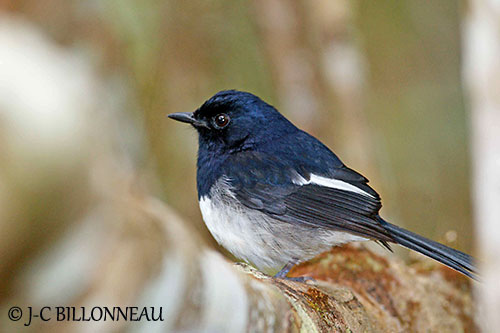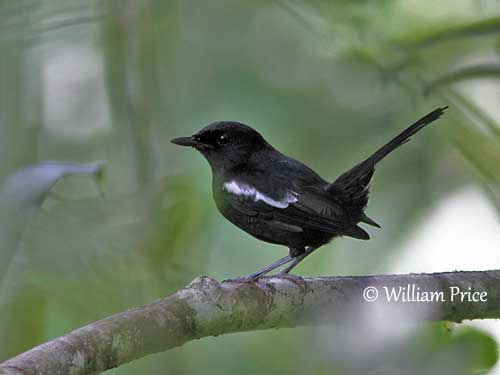
Fr: Shama de Madagascar
Ang: Madagascar Magpie-Robin
All: Madagaskardajal
Esp: Shama Malgache
Ita: Pettirosso gazza delle del Madagascar
Nd: Madagaskardayallijster
Sd: madagaskarshama
Mal: Atodiana, Fatsimboay, Fitadahy, Fitatra
Photographers:
John Anderson
John Anderson Photo Galleries
Jean-Claude Billonneau
Photographe-témoin de la Beauté du Monde
Jean Michel Fenerole
Photos d’Oiseaux du monde
William Price
PBase-tereksandpiper & Flickr William Price
Alan & Ann Tate
AA Bird Photography
Text by Nicole Bouglouan
Sources :
HANDBOOK OF THE BIRDS OF THE WORLD Vol 10 by Josep del Hoyo-Andrew Elliott-David Christie - Lynx Edicions - ISBN: 8487334725
Birds of Madagascar and the Indian Ocean Islands Par Roger Safford, Adrian Skerrett, Frank Hawkins – ISBN: 1472924118, 9781472924117- Editeur: Bloomsbury Publishing, 2015
The Birds of Africa: Volume VIII: The Malagasy Region: Madagascar, Seychelles, Comoros, Mascarenes - Par Roger Safford, Frank Hawkins – ISBN: 1408190494, 9781408190494- Editeur: A&C Black, 2013
Birds of Madagascar: A Photographic Guide Par Pete Morris, Frank Hawkins – ISBN: 0300077556, 9780300077551- Editeur: Yale University Press, 1998
Birds of the Indian Ocean Islands Par Ian Sinclair, Olivier Langrand - ISBN: 1868729567, 9781868729562- Editeur: Struik, 2003
Wikipedia, the free encyclopaedia
Robins and Chats Par Peter Clement
Madagascar Magpie-Robin
Copsychus albospecularis
Passeriformes Order – Muscicapidae Family
INTRODUCTION:
The Madagascar Magpie-Robin is endemic to Madagascar where it frequents a variety of habitats from sea-level to 1,800 metres of elevation. It is often single or in pairs, but the female tends to remain hidden in the undergrowth, whereas the male is active and conspicuous.
Three subspecies share the range. They show fairly distinct differences in plumage pattern and colour.
The Madagascar Magpie-Robin is common to locally common in various wooded habitats, and the species is not globally threatened.
DESCRIPTION OF THE BIRD:
Biometrics:
Length: 18 cm
Weight: 21-24 g
The Madagascar Magpie-Robin adult of nominate race has glossy blue-black plumage overall, except the white shoulder patch and the white fringes on vent feathers.
The female has dark grey-brown upperparts from crown to tail, and grey underparts from chin to belly. Flanks to undertail-coverts are bright cinnamon-rufous.
The bill is black. The eyes are dark brown. Legs and feet are grey.

The juvenile male has duller plumage than adult and whitish throat. The bill has yellow cutting edges.
The juvenile female shows small brown spots on crown, mantle and scapulars, while the underparts show buff-edged feathers.
SUBSPECIES AND RANGE:
The Madagascar Magpie-Robin has three subspecies.
C.a. pica is found in N, W and SW Madagascar.
This race is smaller. The male has white belly, greater coverts, outer fringes of tertials and outer rectrices. The female is paler than nominate.
C.a. albospecularis (described above) is found in NE Madagascar.
C.a. inexspectatus occurs in EC and SE Madagascar.
The male of this race has whitish belly and vent and uniformly black tail.
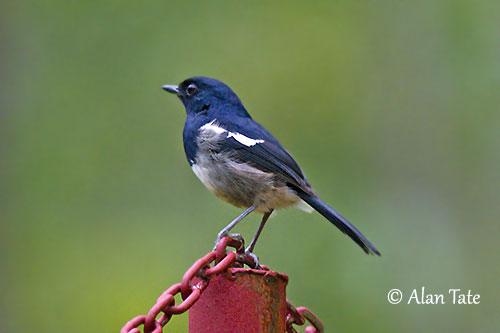
HABITAT:
The Madagascar Magpie-Robin can be found in a variety of habitats throughout the island. It frequents the undergrowth and the floor of woodland and forest such as humid evergreen forest, dry deciduous forest, forest edges, mangroves and secondary growth. But it also frequents agricultural areas, gardens and plantations. The species occurs from sea-level up to 1,800 metres of elevation.
The race “pica” can be seen higher, up to 2,000/2,100 metres.
CALLS AND SONGS: SOUNDS BY XENO-CANTO
The song of the Madagascar Magpie-Robin includes high-pitched fluty notes interspersed with higher whistles “tsiiir…tseeteechirrew tsiiiii churri” and variants, and lasts 3-10 seconds. The song is given from tall tree, often a palm tree. The female gives a simpler version of the male’s song, and both mates sometimes perform duets.
The alarm call is a low “tchee” or a very high “tsiiiiii” usually difficult to locate. Aggressive behaviour is accompanied by harsh “churr”.
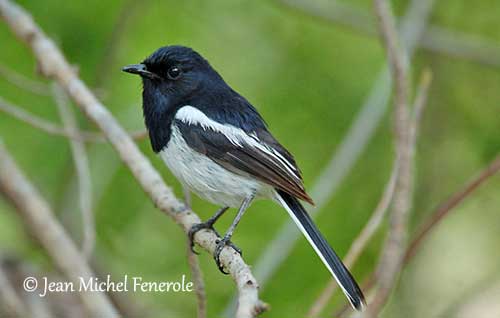
BEHAVIOUR IN THE WILD:
The Madagascar Magpie-Robin feeds primarily on insects such as coleopterans (adults and larvae), orthopterans, cockroaches and ants. But it also consumes spiders, earthworms, geckos and small amphibians. It may take occasionally berries, according to the season.
Insects are caught by short sallies from canopy of trees and bushes. It forages near the ground among undergrowth and on forest floor. However, male and female forage at different levels. The female forages mainly on the ground whereas the male can be seen higher in the undergrowth. They also may join mixed-species foraging flocks.
C.a. pica
Female
The Madagascar Magpie-Robin is monogamous and territorial during the breeding season. It hops and flicks the tail while on the ground, moving in short, jerking movements with the tail sometimes slightly cocked. When excited, the movements are more rapid and nervous.
The race “pica” is known for spreading or fanning its tail, probably to enhance the black-and-white tail pattern. This behaviour is reduced in the race “inexspectatus” which has uniformly black tail, but this one raises the nape’s feathers during the threat displays.
The Madagascar Magpie-Robin is sedentary with high-site fidelity.
The flight is probably undulating and over short distances.
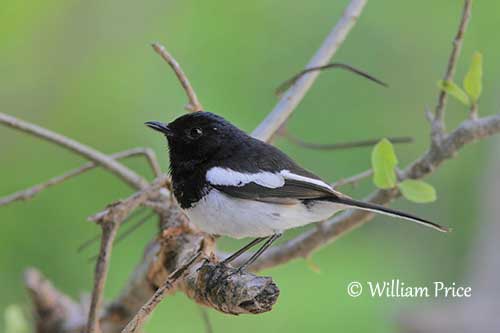
REPRODUCTION OF THIS SPECIES:
The breeding season occurs from late September to February, and possibly in June in the E of the range.
The Madagascar Magpie-Robin female builds the nest. It is often placed in hole in tree trunk, branch or stump, or within hanging vegetation, or epiphytic ferns, or spiny Euphorbia species. It may occasionally be placed in earth bank or on moss-covered rock. The cup-shaped structure is made with grasses, plant fibres, moss, animal hair and snakeskin.
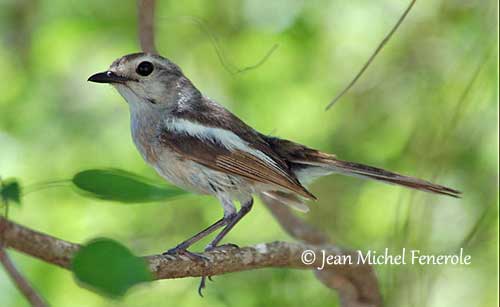
C.a. pica
Female
The female lays 2-5 bluish-green to greenish-white eggs with various darker spotting and mottling. The incubation lasts 13 days. The chicks are fed by both parents. The young leave the nest between 13 and 17 days after hatching, and they are still fed during some days more. They remain in family group during at least 18 days after fledging.
The main predator of this species is the Madagascar Sparrowhawk (Accipiter madagascariensis).
PROTECTION / THREATS / STATUS:
The Madagascar Magpie-Robin is common to locally common, but it is scattered throughout the range and the densities vary depending on the habitat.
The population has not been quantified, but it is suspected to be declining due to habitat destruction.
The Madagascar Magpie-Robin is currently considered not globally threatened and evaluated as Least Concern.
